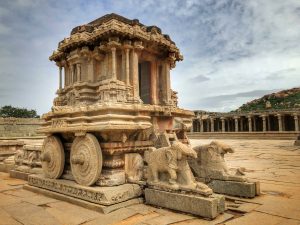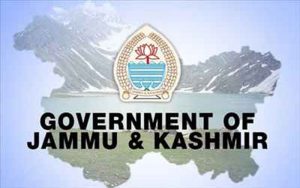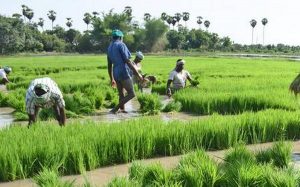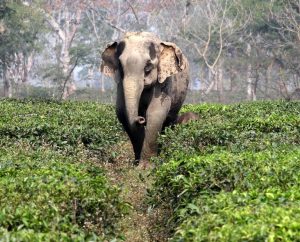Daily Current Affairs for Government Exams:
Today Current Affairs: 7th December 2020 for UPSC IAS exams, State PSC exams, SSC CGL, State SSC, RRB, Railways, Banking Exam & IBPS, etc
Table of Contents
Contents:
- Extreme poverty by 2030:
- Moolamylliang:
- Stone chariot:
- Roshni Act:
- Trade areas:
- Elephant corridors:
- Dust Samples from Hayabusa 2:
- Other important current affairs:
1. Extreme poverty by 2030:

A new study from the United Nations Development Programme (UNDP) has found that an additional 207 million people could be pushed into extreme poverty by 2030 due to the severe long-term impact of the coronavirus pandemic, bringing the total number of the world’s extremely poor to more than a billion.
- The study is part of a long-standing partnership between the UNDP and the Pardee Center for International Futures at the University of Denver (USA).
- The study assesses the impact of different Covid19 recovery scenarios on the Sustainable Development Goals (SDGs), evaluating the multidimensional effects of the pandemic over the next decade.
Findings:
- Under a ‘Covid Baseline’ scenario (based on current mortality rates and the most recent growth projections by the International Monetary Fund – IMF), 44 million people could be pushed into extreme poverty by 2030 as a result of the pandemic.
- The World Bank defines “extreme poverty” as living on less than 1.90 USD per person per day.
- Under a ‘High Damage’ scenario, where the recovery is protracted, Covid 19 is likely to push an additional 207 million people into extreme poverty by 2030.
- It could increase the female poverty headcount by an additional 102 million.
- The ‘High Damage’ scenario anticipates that 80% of the Covid-19 induced economic crisis would persist in 10 years’ time due to loss in productivity, preventing a full recovery to the growth trajectory seen before the pandemic.
2.Moolamylliang:

Moolamylliang, a village in Meghalaya’s East Jaintia Hills district, is making progress in becoming a greener place amid abandoned pits from the rat-hole mining.
- The Jaintia Coal Miners and Dealers’ Association claims there are around 60,000 coal mines across 360 villages in East Jaintia Hills district.
- Moolamylliang used to be one such village until the National Green Tribunal (NGT) banned hazardous rat-hole coal mining in Meghalaya in April 2014 and set a time limit for transporting the coal already mined till that time.
- Though the NGT ban did not stop illegal mining in the district, it helped Moolamylliang reform.
Coal Mining in Northeast: - In the northeast, coal mining is part of a larger trend which is the decimation of natural resources.
- For example, there is large-scale deforestation going on in the Garo and Khasi Hills of Meghalaya, besides limestone mining in the Jaintia Hills.
- Assam, which has lost most of its once extensive forest cover, sees poaching in the Dima Hasao region, coal mining in Upper Assam, and sand/stone mining from river beds.
- There are three notable peculiarities of coal mining in the Jaintia Hills (and elsewhere in Meghalaya).
- Being a tribal-state where the 6th Schedule applies, all land is privately owned, and hence coal mining is done by private parties. The schedule does not explicitly refer to mining.
- The sizable coal deposits in the state, mostly in the Jaintia Hills, occur in horizontal seams only a few feet high that run through the hills which is why rat-hole mining is practised instead of open cast mining.
- Most of the labour (including children) comes from Nepal, the poorer areas of Assam, and Bangladesh. In Meghalaya, the non-tribal is a second-class citizen, as is the poor tribal, which explains the general lack of concern even within the State about the trapped miners.
Rat-hole Mining:
- It is a term used for a hazardous and arduous mining technique where miners crawl into winding underground tunnels that are just 4-5 feet in diameter to extract coal from the deep seams with a pickaxe.
Open Cast Mining:
- It is a surface mining technique of extracting rock or minerals from the earth by their removal from an open-air pit, sometimes known as a borrower.
3.Stone chariot:

The Archaeological Survey of India (ASI) has put up a chain barricade to prevent people from touching or climbing the iconic stone chariot in front of the Vijaya Vittala Temple at Hampi and causing damage to it in any way.
- The stone chariot was one of the most visited monuments in Hampi and needed extra protection.
About the stone chariot:
- The chariot inside the temple complex is a shrine dedicated to Garuda, but the sculpture of Garuda is now missing.
- The Hampi chariot is one of the three famous stone chariots in India, the other two being in Konark, Odisha, and Mahabalipuram, Tamil Nadu.
- The delicately carved chariot at Hampi, art historians say, reflects the skill of temple architecture under the patronage of Vijayanagara rulers who reigned from 14th to 17th century CE.
About Hampi:
- It was the last capital of the last great Hindu Kingdom of Vijayanagar.
- It was a part of the Mauryan Empire back in the third century BC.
- It is a UNESCO World Heritage site.
- Its name is derived from Pampa which is the old name of the Tungabhadra River on whose banks the city is built.
- The site used to be multi-religious and multi-ethnic; it included Hindu and Jain monuments next to each other.
- It has been described by UNESCO as an “austere, grandiose site” of more than 1,600 surviving remains of the last great Hindu kingdom in South India.
- The buildings here predominantly followed South Indian Hindu arts and architecture dating to the Aihole-Pattadakal styles, but the Hampi builders also used elements of Indo-Islamic architecture in the Lotus Mahal, the public bath and the elephant stables.
- Hemkunta Hill, south of the Virupaksha temple contains early ruins, Jain temples and a monolithic sculpture of Lord Narasimha, a form of Lord Vishnu.
4.Roshni Act:

The J&K administration has sought modifications to the High Court judgment passed on October 9, which declared the 2001 Roshni Act null and void in the Union Territory (UT) and directed authorities to end the ownership rights of occupants of government land.
- The petition argued that a large number of common people would suffer unintentionally.
- This includes landless cultivators and individuals who are themselves residing in dwellings on small areas.
- They are unfortunately clubbed along with rich and wealthy land grabbers, who have obtained a title over state land through the provisions of the now struck Act.
About the Roshini Act:
- Enacted in 2001, the law sought to regularise unauthorized land.
- The Act envisaged the transfer of ownership rights of state land to its occupants, subject to the payment of a cost, as determined by the government.
- The government said the revenue generated would be spent on commissioning hydroelectric power projects, hence the name “Roshni”.
- Further, through amendments, the government also gave ownership rights of agricultural land to farmers occupying it for free, charging them only Rs 100 per Kanal as a documentation fee.
- In 2009, the State Vigilance Organisation registered an FIR against several government officials for alleged criminal conspiracy to illegally possess and vest ownership of state land to occupants who did not satisfy the criteria under the Roshni Act.
- In 2014, a report by the Comptroller and Auditor General (CAG) estimated that against the targeted Rs 25,000 crore, only Rs 76 crore had been realized from the transfer of encroached land between 2007 and 2013, thus defeating the purpose of the legislation.
- The report blamed irregularities including an arbitrary reduction in prices fixed by a standing committee and said this was done to benefit politicians and affluent people.
5.Trade areas:

The idea of alternate markets, or “trade areas” has been described in the Farmer’s Produce Trade and Commerce (Promotion and Facilitation) Act, 2020.
- The first and the most advanced experiments of these were in Maharashtra in 2005-06.
- The government had then sanctioned the setting of private markets and collection centers through the issuance of Direct Marketing License (DML)s.
- The private markets were wholesale mandis set up by private entrepreneurs, while the collection centres were for aggregators like BigBasket and Reliance Fresh who procured directly from farmers at the farm gate.
- Private markets were for the facilitation of trade in agri-commodities.
- The state government’s director of marketing issues licenses for setting up these markets.
- A minimum of five acres of land would be required for setting up of these markets along with infrastructure like auction halls, sheds, waiting halls, motorable roads, etc.
- Barring the land cost, the initial investment towards such markets is around Rs 4-5 crore.
- Later on, a more intense intervention was the introduction of direct market licenses (DMLs) which allowed aggregators like Big Basket, Reliance Fresh, ADM Agro Industries to buy directly from the farmers.
One of the license clauses is that not a single trade would be carried out below the government notified MSP by these license holders.
- In the case of complaints, the licenses can be revoked.
- Many DML holders suspend their procurement when market prices fall below the government declared MSP.
- This is mainly to avoid action from authority.
- Since they were introduced, estimates say around 22 per cent of the total business of mandis have been diverted towards these ‘trade area’.
- APMCs continue to report annual turnover of over Rs 48,000 crore while these markets on the other hand report business of around Rs 11,000-13,000 crore.
6.Elephant corridors:

Directed the Odisha government to prepare an action plan within three months on 14 identified elephant corridors for providing stress-free migration to jumbos from one habitation to another in the State.
- NGT had directed authorities to expedite the demarcation of the corridors and the process for formal notification within a specific time frame in 2017.
- The government had sought time to inform the NGT about an action plan to strengthen corridors. It, however, failed to give a concrete action on physical progress on corridors.
- So, an NGO had moved the NGT seeking concrete action on the strengthening of corridors.
- Demands by the petitioner: Necessary legal action against encroachers and those violating the Provisions of the Forest Conservation Act 1980 and the Indian Forest Act 1927 in the proposed corridors.
- The government should remove the unauthorised buildings from the reserve forest land in Dhenkanal district, which sees acute human-elephant conflict, and make the forestland free from encroachment.
The Elephant Corridors:
- Elephant corridors are narrow strips of land that connect two large habitats of elephants.
- Elephant corridors are crucial to reducing animal fatalities due to accidents and other reasons.
- So fragmentation of forests makes it all the more important to preserve migratory corridors.
- The movement of elephants is essential to ensure that their populations are genetically viable.
- It also helps to regenerate forests on which other species, including tigers, depend.
- Nearly 40% of elephant reserves are vulnerable, as they are not within protected parks and sanctuaries. Also, migration corridors have no specific legal protection.
- Forests that have turned into farms and unchecked tourism are blocking animals’ paths. Animals are thus forced to seek alternative routes resulting in increased elephant-human conflict.
- Weak regulation of ecotourism is severely impacting important habitats. It particularly affects animals that have large home ranges, like elephants.
- ‘Gaj Yatra’, a nationwide campaign to protect elephants, was launched on the occasion of World Elephant Day in 2017.
- The campaign is planned to cover 12 elephant range states.
- The campaign aims to create awareness about elephant corridors to encourage free movement in their habitat.
7.Dust Samples from Hayabusa 2:

Japan Aerospace Exploration Agency (JAXA) has received a capsule from the unmanned Hayabusa 2, carrying the first extensive samples of dust from the asteroid Ryugu.
- Hayabusa 2 was launched from Japan’s Tanegashima space centre in 2014 and took four years to reach the asteroid Ryugu.
- The mission builds on the original Hayabusa mission that was launched in 2003 and successfully linked up with asteroid Itokawa in 2005.
- It returned samples to Earth in 2010 marking the first time when sample materials from an asteroid were brought back to Earth.
- Hayabusa is the Japanese term used for the peregrine falcon, which is the fastest bird during its hunting dive (200 mile per hour).
- The space probe orbited above the asteroid for a few months to map its surface before landing. Then it used small explosives to blast a crater, collected the resulting debris and headed back to Earth in November 2019.
- The craft’s mission seeks to answer some fundamental questions about the origins of the Solar systemand where molecules like water came from.
Significance:
- Asteroids and comets are primitive bodies that can be considered to be the building blocks of the early Solar system and they hold a record of the birth and initial evolution.
- Larger planets like Earth went through a more complex evolution over which the pristine materials were melted and altered significantly. Due to this change, the materials found on large planets do not hold information into their early stages of formation.
- Asteroids and comets retain a record of when, where and in what conditions they were formed. Exploration of these primitive bodies is essential in gaining insight into the formation of the Solar system.
- Gases trapped in the rock samples could reveal more about the chemical mixture from the planets formed.
Significantly, among all the reasons that will eventually cause the extinction of life on Earth, an asteroid hit is widely acknowledged as one of the likeliest.
Other important current affairs:
1.Over 140 petitions challenging the Citizenship Amendment Act (CAA) have been pending for nearly a year in the Supreme Court, leaving petitioners from various walks of life and across the political spectrum “deeply disappointed” over the delay.
- In December 2019, the court declined a stay while asking the Centre to make an all-out effort to disseminate the actual legislative intent of the citizenship law.
- In January 2020, the court, to another plea to stay the law, had said the CAA was “uppermost in everybody’s minds”.
- The CAA fast-tracks citizenship-by-naturalization process for persons from six religious communities, other than Muslims, who have fled persecution from Pakistan, Bangladesh, and Afghanistan.
- The petitions against CAA have argued that a law that welcomes “illegal migrants” into India selectively on the basis of their religion, is against principles of secularism, right to equality and dignity of life enshrined in the Basic Structure of the Constitution.
2.A study commissioned by the US State Department has found that “directed” microwave radiation is the likely cause of illnesses among American diplomats in Cuba and China.
- The health effects were experienced by about two dozen Americans affiliated with the U.S. Embassy in Cuba as well as Canadian diplomats and personnel at the U.S. consulate in Guanghzhou, China, in early 2017.
- The study found that “directed, pulsed radio frequency energy appears to be the most plausible” explanation for symptoms that included intense head pressure, dizziness and cognitive difficulties.
- It found this explanation was more likely than other previously considered causes such as tropical disease or psychological issues.
- The study, however, did not name a source for the energy and did not say it came as the result of an attack.
3.The Petroleum and Natural Gas Regulatory Board (PNGRB) has notified a new tariff structure for 14 natural gas pipelines.
- Under the new unified tariff structure, buyers will be charged a fixed tariff for the transport of gas within 300 kms of a source and a fixed tariff for the transport of gas beyond 300 kms on a single pipeline network.
- This, PNGRB says, would be significantly cheaper for buyers further away from the source of gas that were earlier charged on the basis of the number of pipelines used and the distance from the source of gas.
- Therefore, a buyer using multiple pipelines in GAIL’s networks would likely benefit significantly from this change.
- The changes in the tariffs will likely incentivise greater investment into gas transmission infrastructure as natural gas becomes more affordable for users further away from the west coast of the country.
- Gas transport tariffs are set to provide a “reasonable rate of return” on normative levels of capital employed and operating costs for pipelines, according to the PNGRB.
4.Insurance Regulatory and Development Authority of India (IRDAI) has standardised health policies across all health insurers to even cover robotic and bariatric surgeries.
- Bariatric surgery is an operation that helps lose weight by making changes to the digestive system.
- Recently, India became the first country to perform a telerobotic coronary surgery on humans.
- Robotics: It is the intersection of science, engineering and technology that produces machines, called robots, to substitute for (or replicate) human actions.
- Robotic Surgery: Robotic or Robot-assisted surgery integrates advanced computer technology with the experience of skilled surgeons.
- This technology provides the surgeon with a 10x magnified, high-definition, 3D-image of the body’s intricate anatomy.
- The surgeon uses controls in the console to manipulate special surgical instruments that are smaller, as well as more flexible and maneuverable than the human hand. The robot replicates the surgeon’s hand movements while minimizing hand tremors.
5.China successfully powered up its “artificial sun” nuclear fusion reactor for the first time recently, marking a great advance in the country’s nuclear power research capabilities. The nuclear reactor is expected to provide clean energy.
- The HL-2M Tokamak reactor is China’s largest and most advanced nuclear fusion experimental research device, and scientists hope that the device can potentially unlock a powerful clean energy source.
- HL-2M Tokamak device is used in it to replicate the nuclear fusion process that occurs naturally in the sun.
- It uses a powerful magnetic field to fuse hot plasma and can reach temperatures of over 150 million degrees Celsius, approximately ten times hotter than the core of the sun.
- Located in Sichuan province, the reactor is often called an “artificial sun” on account of the enormous heat and power it produces.
6.In a rare celestial event, Jupiter and Saturn will be seen very close to each other (conjunction) on 21st December 2020, appearing like one bright star.
- Conjunction: If two celestial bodies visually appear close to each other from Earth, it is called a conjunction.
- Great Conjunction: Astronomers use the term great conjunction to describe meetings of the two biggest worlds in the solar system, Jupiter and Saturn.
- It happens about every 20 years.
- The conjunction is the result of the orbital paths of Jupiter and Saturn coming into line, as viewed from Earth.
Jupiter orbits the sun about every 12 years and Saturn about every 29 years. - The conjunction will be on 21st December 2020, also the date of the December solstice.
- It will be the closest alignment of Saturn and Jupiter since 1623, in terms of distance. The next time the planets will be this close is 2080.
- They will appear to be close together, however, they will be more than 400 million miles apart.




